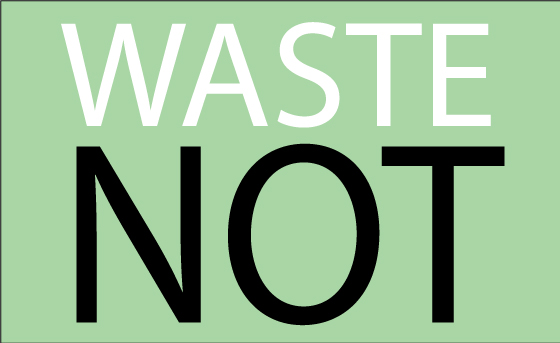Waste Not
What we can do as restaurant-goers and what the business should be doing on its own
More stories from Lara Bockenstedt

Hurriedly, plates are gathered and cleared. Chilled beverages are poured, dashed with straws and later discarded. My hands are dirty so I wash them and throw a paper towel square in the nearest trash bin.
Being a waitress is a busy occupation. It’s the one aspect of my week where time can’t be compromised and muscle memory is necessary. There isn’t a spare second to analyze or overthink the process.
If I wanted to avoid tossing trash during work-shifts, I wouldn’t be able to do my job.
Many zero-waste icons such as Bea Johnson, Lauren Singer and Celia Ristow share their ideas for avoiding accumulating trash. They don’t indoctrine by telling people if they accumulate trash they’re terrible people, and the resources they offer are useful in order to be more eco-friendly.
However, none of them work jobs in the food industry, or other part-time manual jobs.
As zero-waste blogger Kathryn Kellogg said in an interview with The Guardian, “I think absolutely anyone can participate, it’s to what degree they can.”
Part of this is my own fault. When I’m a customer, I think: how often do I clear my plate? (Rarely, it can be difficult to determine the serving size before food comes.) How many napkins do I use? (Too many. Especially when over-sized hamburgers are involved.)
The National Heart, Lung and Blood Institute calls the excess in portion sizes “portion distortion.” Compared to 20 years ago, the average plate of food served in a restaurant is enough for two to three people.
When diners visit restaurants, around 17 percent of their food goes uneaten, contributing to the more than 40 percent of wasted food in the U.S. each year.
For many of us, it’s too much to consume in one sitting, but we don’t eat enough to justify taking it home. What’s left is tossed. The best solution I can offer is to check with your wait staff about how much food is going to be served. You are under no obligation to order more than you need.
Being prepared and willing to look awkward to the wait staff is part of it too. One thing I’ve started to do is bring my own tupperware, or ask about to-go boxes. Are they styrofoam or compostable?
To avoid creating a pile of napkins, I’ve found it helpful to bring my own silverware and cloth napkin just in case.
Beyond customers, a large portion of this responsibility falls on restaurants.
Around 49,296,540 pounds of total waste are thrown out each day in black garbage bags from full service restaurants, a study at the University of Arizona found in 2005.
According to End Food Waste Now, there are available solutions for restaurants to lower this drastic quantity. They can donate the excess to a food bank, assess prep waste and rethink how they use leftovers. Food that is considered waste should be diverted to compost rather than the local dump.
Make sure food doesn’t go to waste or to waist either. Arrive to your favorite diner prepared with tupperware and your cloth napkin already tucked into your shirt in anticipation of the appropriately portioned meal you’re soon to devour. And if you’re employed in the food industry like I am, don’t berate yourself for doing your job.

